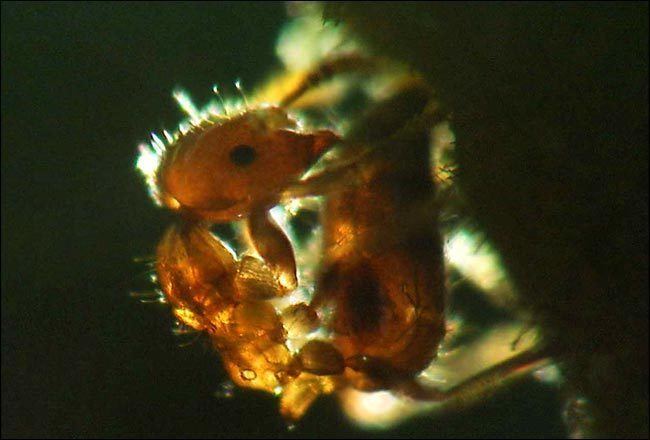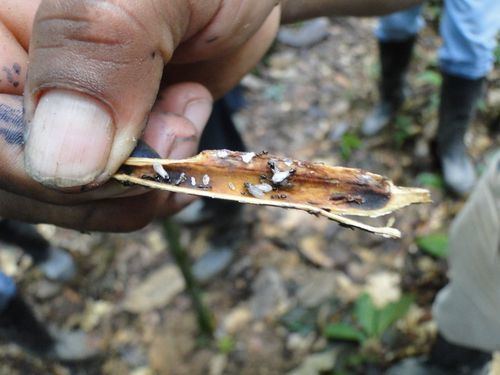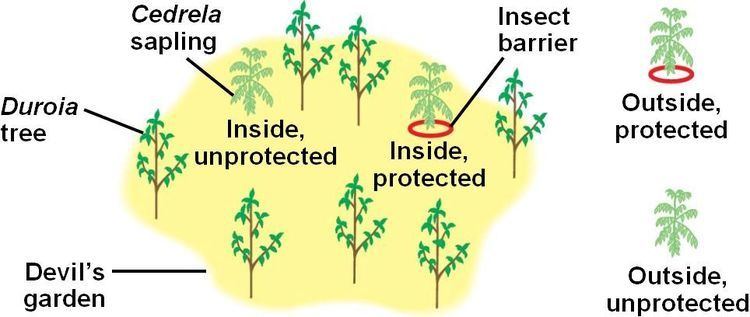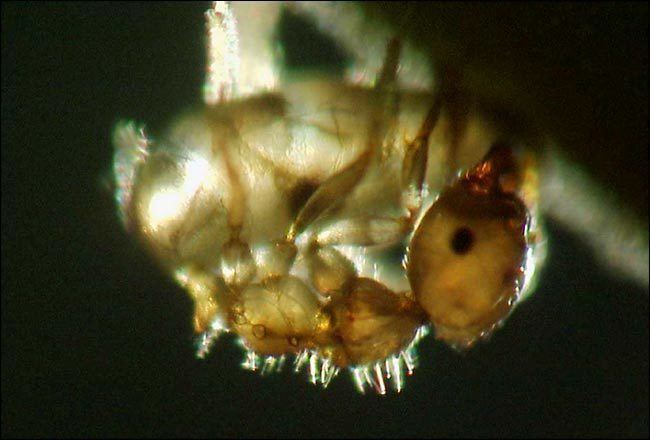Rank Species | Family Formicidae Genus Myrmelachista Higher classification Myrmelachista | |
 | ||
Similar Duroia hirsuta, Myrmelachista, Ant, Duroia, Insect | ||
Myrmelachista schumanni, also known as the lemon ant, is a species of ant that is notable for the creation of Devil's garden. Using its own herbicide they kill off all the plants in an area except for the myrmecophytes, or ant-plants, in which they reside.
Contents

Ant–plant mutualism

M. schumanni live in large clearings in the rainforest, called devil's gardens, where there is little to no bio-diversity compared to the surrounding area. There are only one to three species of plants found in these areas consisting of Cordia nodosa, Tococa guianensis, Duroia hirsuta or Clidemia heterophylla.
The few studies of the mutualism between M. schumanni–D. hirsuta have incorrectly concluded that these clearings are formed by allelopathy on the part of D. hirsuta. It was established that worker ants were injecting leaves with formic acid, a toxin commonly produced in ant species, and the plants started to die within 24 hours. Lemon ants are the only known insect to use formic acid as a herbicide.

By killing other plants, the lemon ants provide themselves with a nest site, usually residing in D. hirsuta. Researchers estimate that the largest garden observed, contains 328 trees over 1,300 square meters and is around 800 years old.
Name

Lemon ants get their name from the lemony taste of acids produced as part of a glandular chemical defense system. When crushed or attacked, citronellal pheromones are created to communicate alarm to nearby individuals, which also produces a citrus odor.

